Tennis Court LED Lighting Guide & Solution
Tennis is one of the most popular sports in the world. It is mostly played in North America and Europe, as well as other parts of the globe. If you have seen a tennis match, then chances are that you would have noticed the bright LED lights. There is no better way to illuminate a court, then by using LED lights. Besides, there are many solar-powered options. LED lights tend to be more durable and help conserve energy. They are a popular alternative to halogen or metal halide lights. Moreover, when one switches to LED lighting, they can expect the electricity bills to reduce by more than half while experiencing greater brightness.
When it comes to a tennis court, there is no alternative to LED tennis court lights. With a long warranty and better quality, LED lights are just what a tennis court needs. There are two main reasons why LED lights are commonly used. Usability and energy savings are guaranteed when LED lights are used. Furthermore, the playing experience is always better with LED lighting. Tennis court owners are aware of the importance of LED lighting and how they can optimize lighting using LED lighting. LED solutions such as tennis court LED lights are known for their ability to pay for themselves through cost savings.
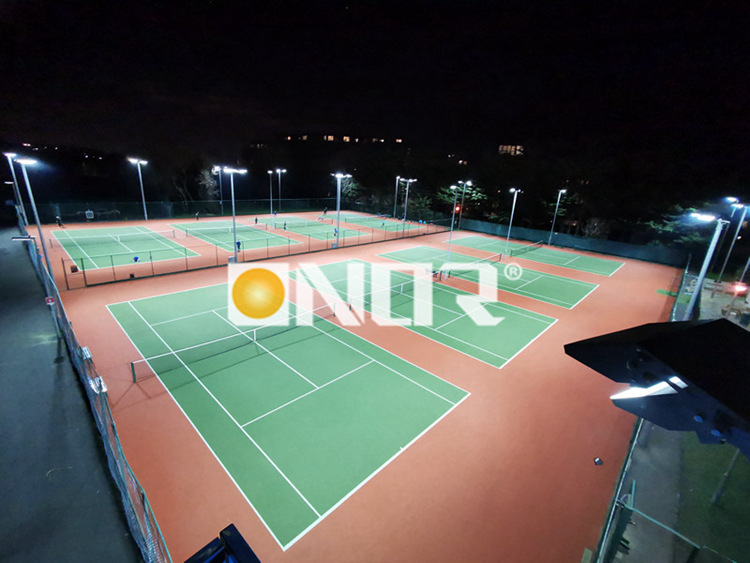
Lighting Requirements for Tennis Court Lighting
As per the guidelines of the International Tennis Federation, both indoor and outdoor fields have quite similar requirements. Some of the main lighting requirements for tennis court lighting include light pollution prevention, color temperature, CRI, anti-glare, lighting uniformity, and ground brightness or the lux level. There are different types of tennis court which is why it is difficult to determine the LED lighting requirement without going through the parameters. It is vital determine where the tennis court has been designed for televised matches or a professional competition. For example, a tennis court that is classified as 1 would require ground brightness that is near to 500 lux. The suggested uniformity level would be at least 0.7. Moreover, the color temperature should be 4000K and the CRI close to 80. As the lighting standard rises, so does the cost of the LED lights. The more uniformity and the higher the power required, the more the price.
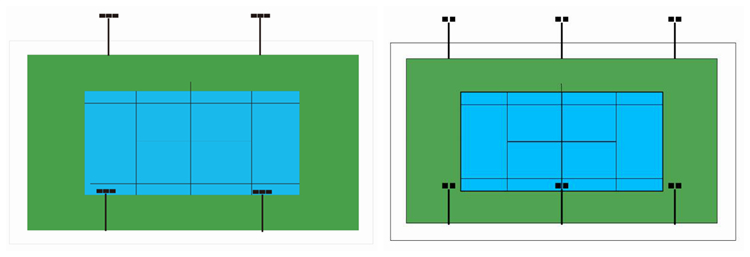
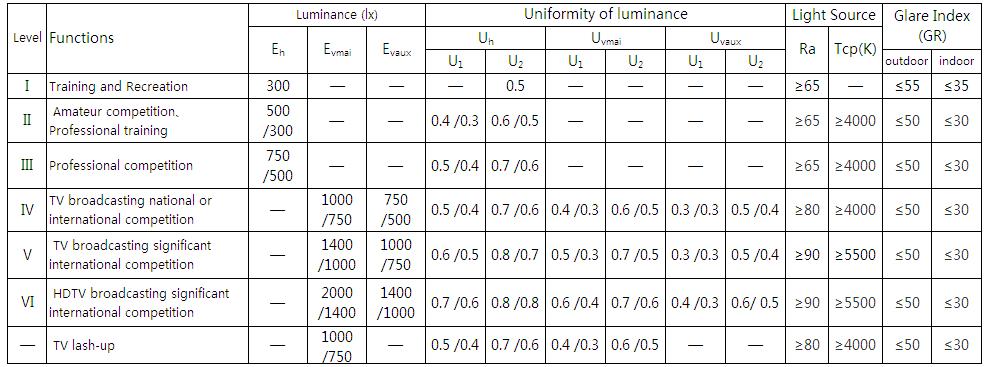
Factors to Consider When Designing Lighting for A Tennis Court
There are certain factors that should be considered when designing lighting for a tennis court. Some of the most important factors are mentioned below.
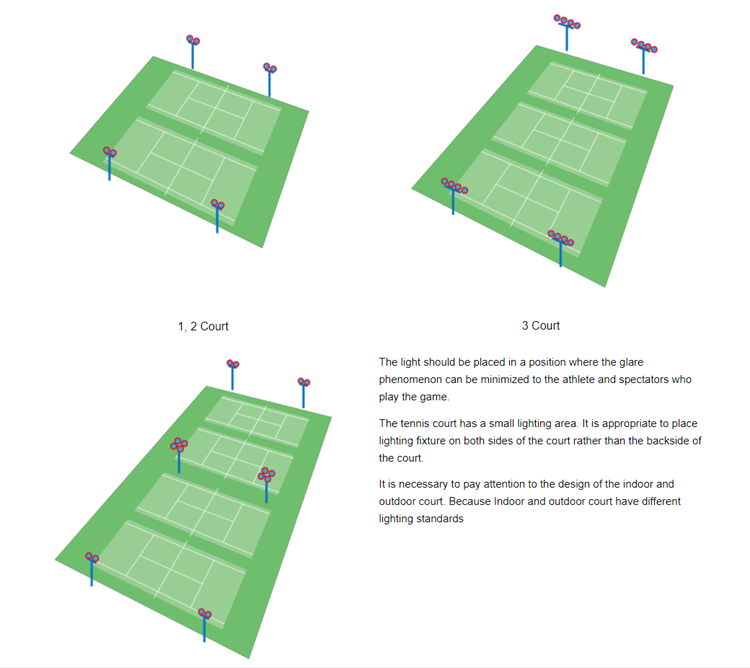
Higher Brightness
When compared to HID floodlights, LED lights offer greater brightness. The US government had conducted a survey and found that close to 40 percent of the tennis courts use HID, while the remaining 60 percent use LED lights. When compared to LED lights, HID lights require extra money to operate. It is due to this reason that more and more tennis stadiums and clubs are replacing mercury, sodium, or metal halide lights with LED lighting. The maximum wattage available for LED lights is 10,000 watt, whereas, only 1500-200 watt is offered for metal halide floodlights. Moreover, multiple sets of HID are required for replacement as compared to no additional requirements for LED lights.
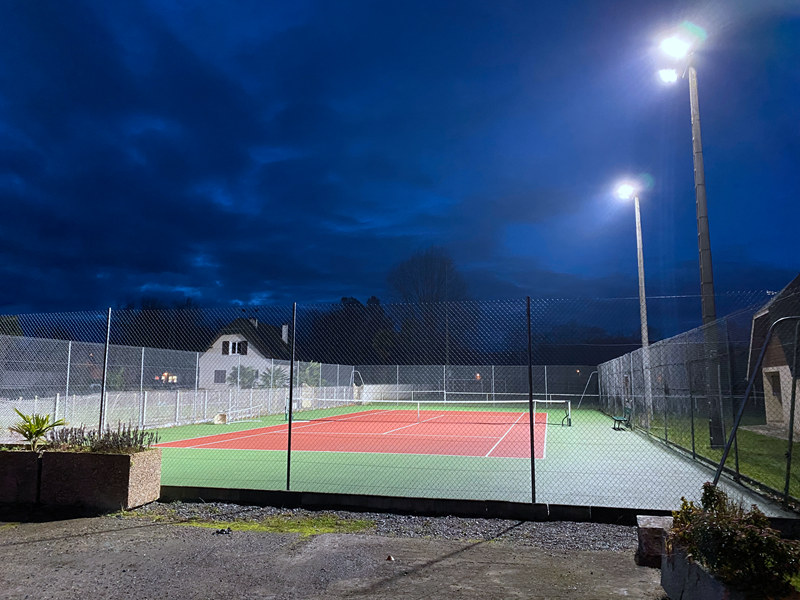
Luminous Efficacy
Another important factor that has to be considered is luminous efficacy. In simple words, it means maximum output. As a rule of thumb, keep in mind that the higher the lumen the greater the brightness of LED lights. Energy-saving can be easily indicated by finding out the luminous efficacy of LED lights. To determine the luminous efficacy, it is best to divide the lumens by watts. It will allow you to figure out the amount of lumens that are produced for each watt of electricity required. LED lights will help save up on electricity costs.
Solar-Powered LED Lights
It is crucial to decide whether the LED lights should be solar-powered or not. Although, LED lights save a lot of electricity, it is always a great idea to invest in renewable energy options to save more on energy costs. By installing solar-powered LED lights, you can be rest assured that the LED lights will absorb energy from the sun and reuse it during the night. Normally, the battery should last anywhere from 3-4 hours depending on usage. Solar-powered LED lights are always a better option, especially in the long run.
Greater Durability
Durability is another important factor that has to be considered when designing the lighting for a tennis court. A great thing about LED lights is the fact that they offer a longer service life. If one looks at the life span of LED lights, they will notice that less frequent replacement is required. LED lights have a life span of about 100,000 hours, whereas their halogen counterparts only last 2,000 hours.
Waterproof
Outdoor tennis courts require waterproof LED lights. According to the standards, LED lights of at least IP64 should be considered as they would be able to resist water jets. LED lights are known for their waterproof features. Moreover, there is no filament, brittle glass, or gas discharge tube in LED lights.
Heat Dissipation
Whether the tennis court is indoors or outdoors, heat dissipation of lighting is crucial. The reason behind this is that without a proper heat dissipation system, the service life of the lighting would be reduced significantly as the heat trapped inside its body is harmful. LED lights normally produce less heat as compared to incandescent bulbs. The heat dissipation system of LED lights helps ensure that the heat makes its way outside the body of the lights.
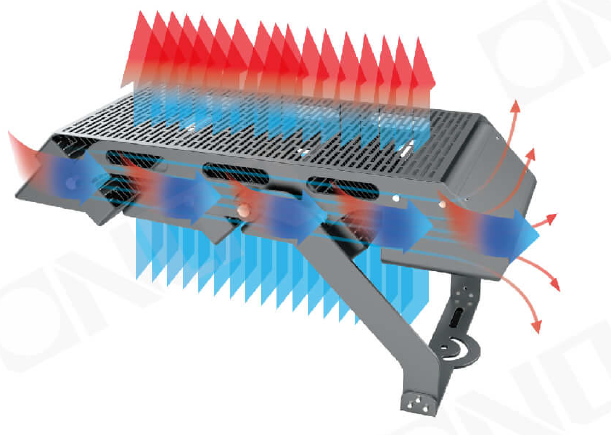
How to Choose the Best LED Light For Tennis Court
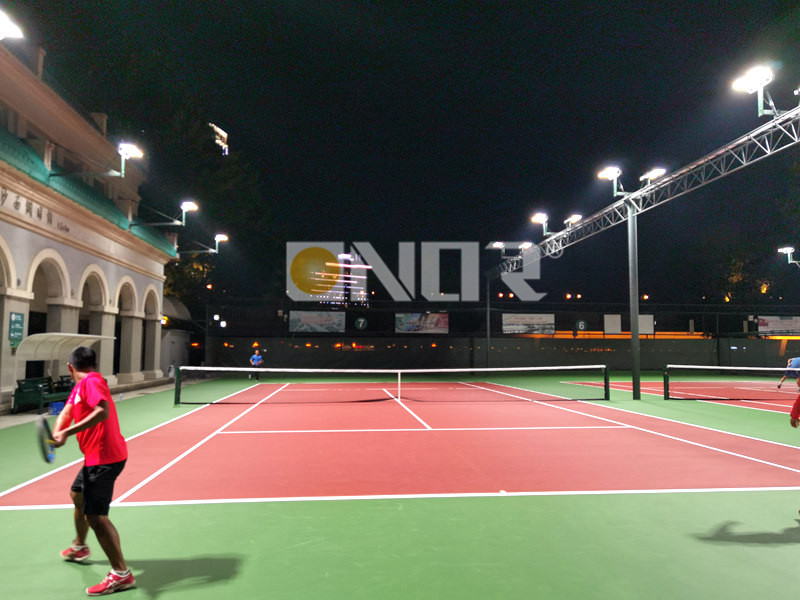
Understand the Reason Why Tennis Court Lights Are Required
The first thing that one needs to do is understand why tennis court lights are needed. One has to decide when the LED lights would be switched on and for how long. Next, you need to whether it is an indoor tennis court or an outdoor tennis court. The weather should also be considered. Without any lights, it would be impossible to play tennis during the night time. Moreover, daylight would not be sufficient for an indoor tennis court and would impact the performance of tennis players as well as their motivational levels. Extra lighting is always a good idea. It helps set the right mood.
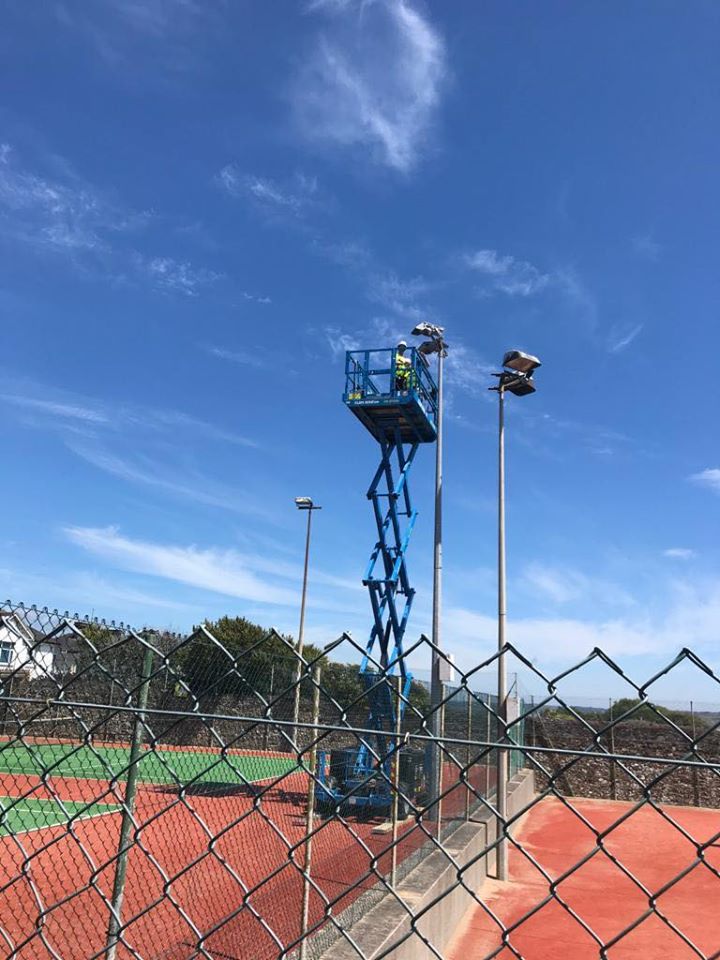
Court Dimensions
In order to choose the right tennis court lights, one has to know the court dimensions. After all, choosing LED lights is not a DIY project. It is a one-time investment and hence, you need to be careful.
Level of Illumination
Only choose LED lights that provide the right amount of illumination. Good visibility is critical to progress of the match. Both spectators and players will appreciate a good level of illumination.
Illumination Uniformity
Next, when choosing LED lights, one has to ensure that the illumination is uniform throughout the playing field. Otherwise, it would lead to unrealized potential among players who would feel frustrated with the court.
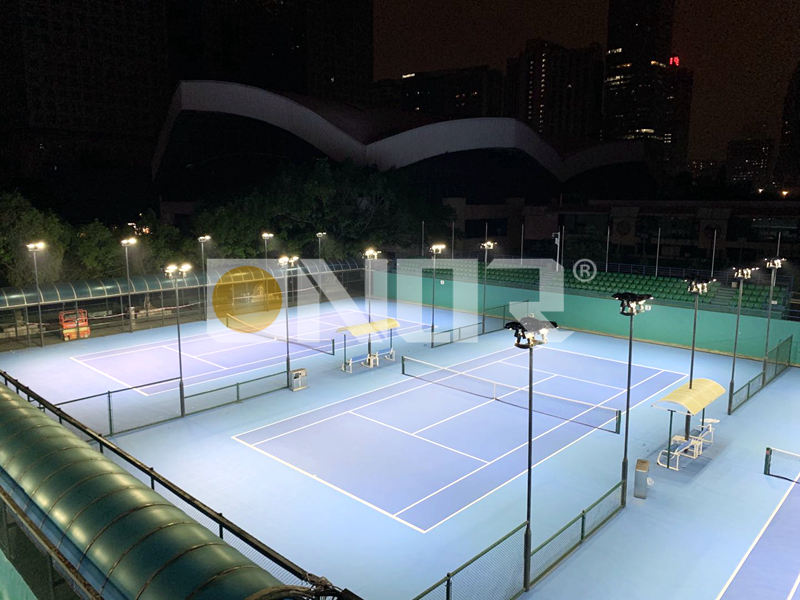
Government Laws
In order to choose the right LED lights for the tennis court, relevant government laws must also be known. There are certain regulations in place which look at the lighting level of sports. Hence, it might be a good idea to consider contacting a professional LED lighting company such as Onor Lighting as the company knows about the relevant laws. Besides, it is more cost-effective to know about the government laws before you make the wrong purchase.
Cost
There are various costs that need to be determined before you choose the LED lights. Some of the costs that should be taken into account include maintenance costs, running costs, installation costs, shipping costs, light costs, and etc.
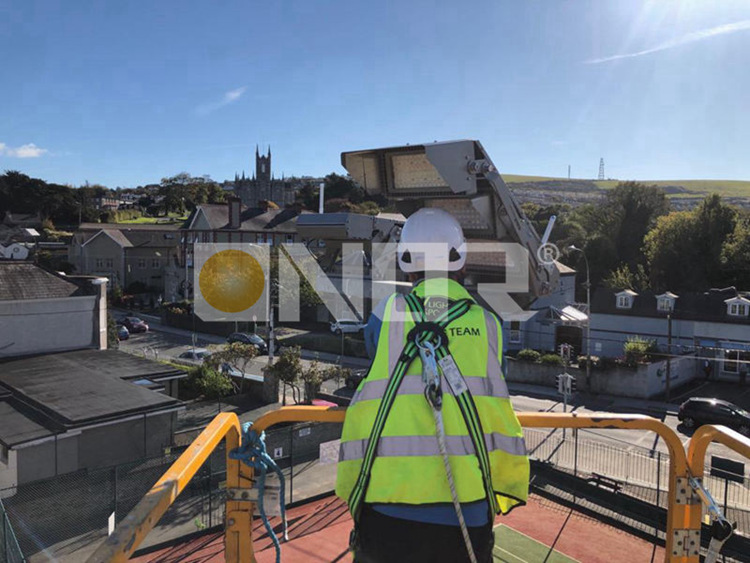
Spill Light
More and more tennis court owners are becoming aware of light pollution. Governments have even imposed strict laws to control spill light. When installing LED lights outside, make sure to choose LED lights that minimize spill light and maximize light concentration.
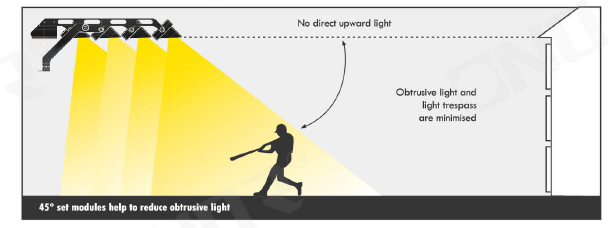
Special Tips
The following tips will help you get an idea on how to choose the best LED lights
• Make sure that spectators and players do not suffer from glare while playing.
• Offer a clear visual view that is not influenced by illumination.
• Ensure that the mounting height is anywhere between 8-12 m and not more for a single court.
• The surrounding environment should also be considered so that there is no disruption in the area.
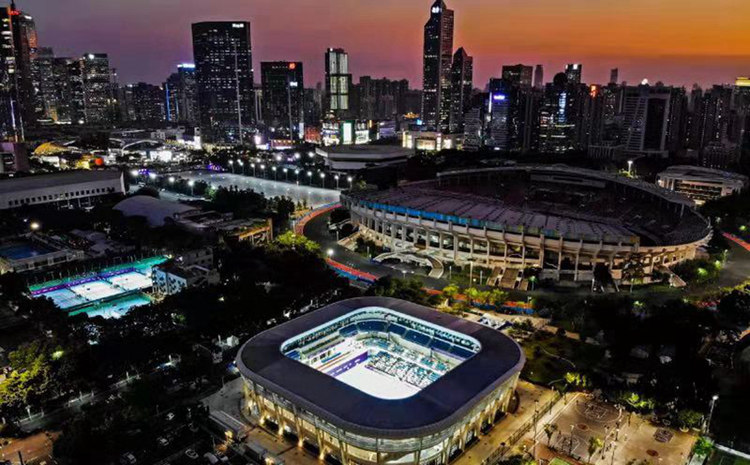
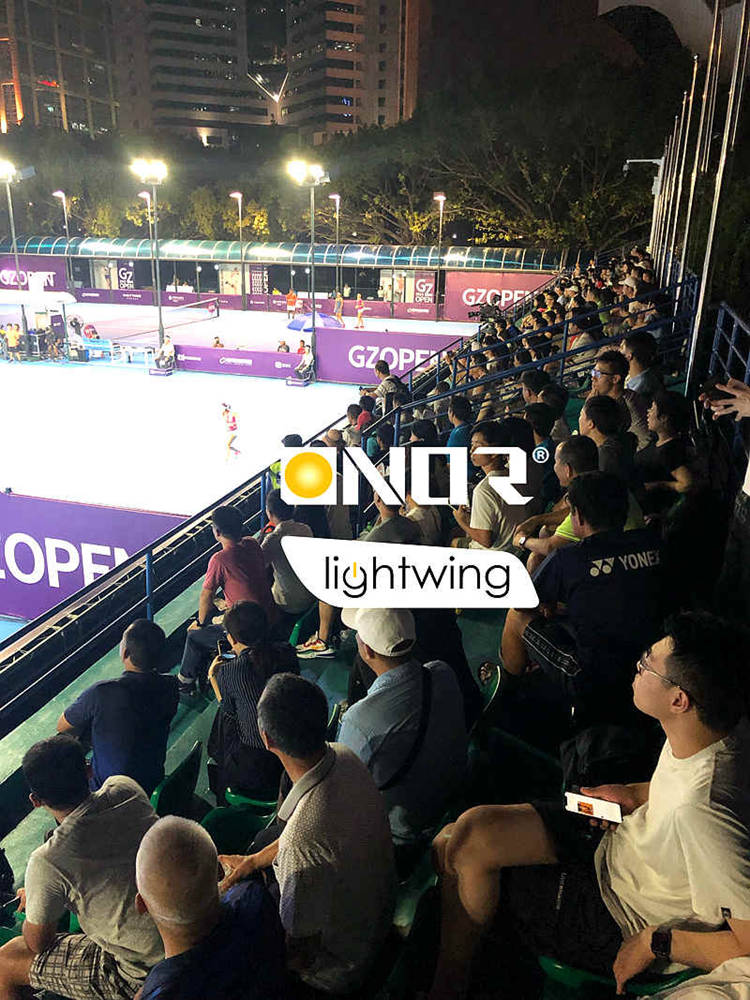
 English
English Español
Español Português
Português Pусский
Pусский Français
Français Deutsch
Deutsch 日本語
日本語 한국어
한국어 Italiano
Italiano عربى
عربى ONOR Lighting
ONOR Lighting